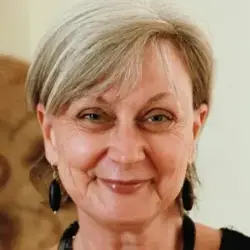Better than a Thousand Words
A friend of mine came to have coffee with me recently. She was very anxious and upset about her husband’s upcoming prostatectomy. He had developed a fairly aggressive cancer that needed immediate action.
It turned out that they had seen a urologist who had recommended a surgical solution. They were panicked and confused. The surgeon had told them about some other options but the information just hadn’t sunk in and they were really uncertain about the surgery itself.
My friend and her husband went on to seek a second opinion. It turned out that surgery was indeed the best option but they came away from that second consultation much calmer and able to understand why that recommendation was being made.
So, what was different? It turns out that the oncologist who provided the second opinion had drawn some pictures.
Learning styles
We all know that when we are under duress it is hard to comprehend new concepts. People need be given new information in a way that best matches their ability to comprehend, and that does not just refer to the complexity of the language we use to communicate our message.
It is said that we all have a dominant learning style. Some of us learn by seeing, some by hearing and some by doing. Each learning style involves a different part of the brain and education that involves more than one form of learning, that is that activates more than one part of the brain, has been shown to be more effective.
Some studies estimate that up to 65% of the population are predominantly visual learners.
My friend is an artist, her husband is a quiet non-verbal kind of person. No wonder the oncologist who drew pictures was so much more successful at communicating with them than the one who simply used words!
Speaking in pictures
There’s a TED talk by German artist called Christopher Niemann about the power of visual representations in communication. It’s quite thought provoking as well as entertaining and it’s got me thinking that it might be time to invest in a white board for my consulting room.
Christopher Nieman’s TED talk is here:
https://www.ted.com/talks/christoph_niemann_you_are_fluent_in_this_language_and_don_t_even_know_it?

Jan is Sydney GP, private psychological medicine practitioner in Sydney’s inner west and a GP educator for Black Dog Institute.
Have you ever been on your way to work and asked yourself “I don’t really feel well . . . should I really be working clinically today” – and yet still turned up and completed a full day’s work?
*In April 2021, approximately 619,000 older Australians (aged 65 and over) were employed in the labour force", and at 66 years, I’m proud to be included in this statistic. By Tessa Moriarty
For as long as I have been in practice (and that’s a long time!) I have done my best to avoid looking after old people.

